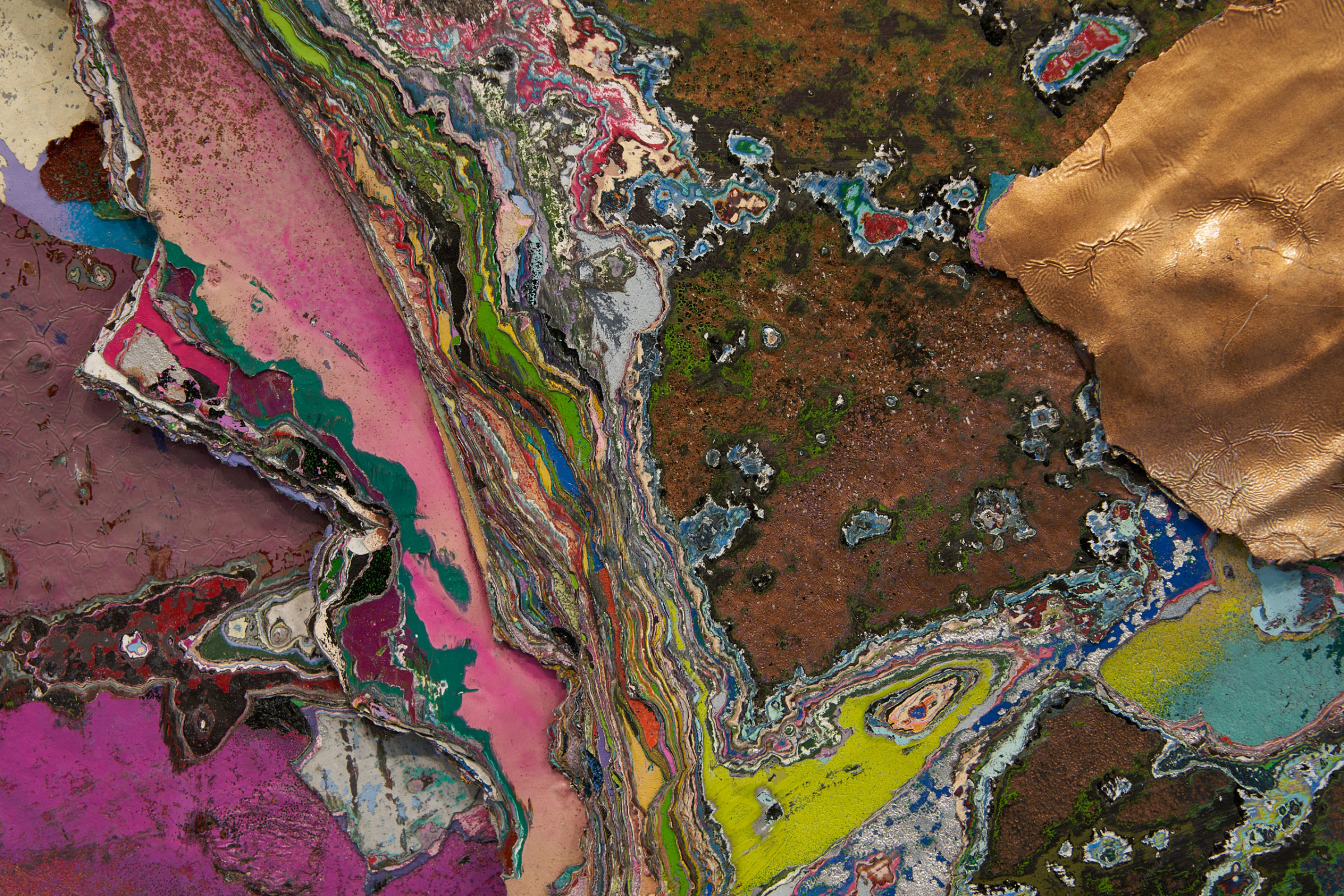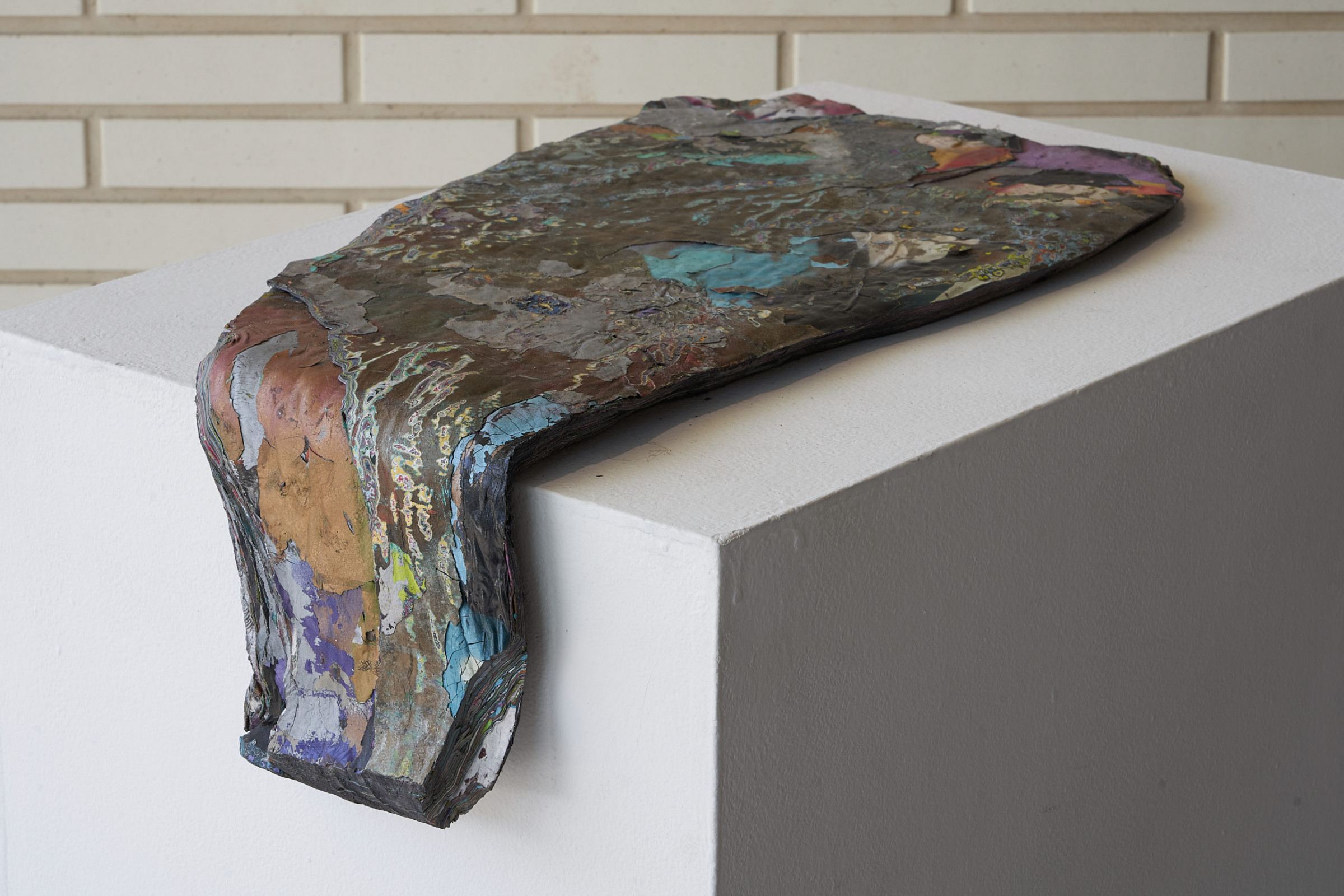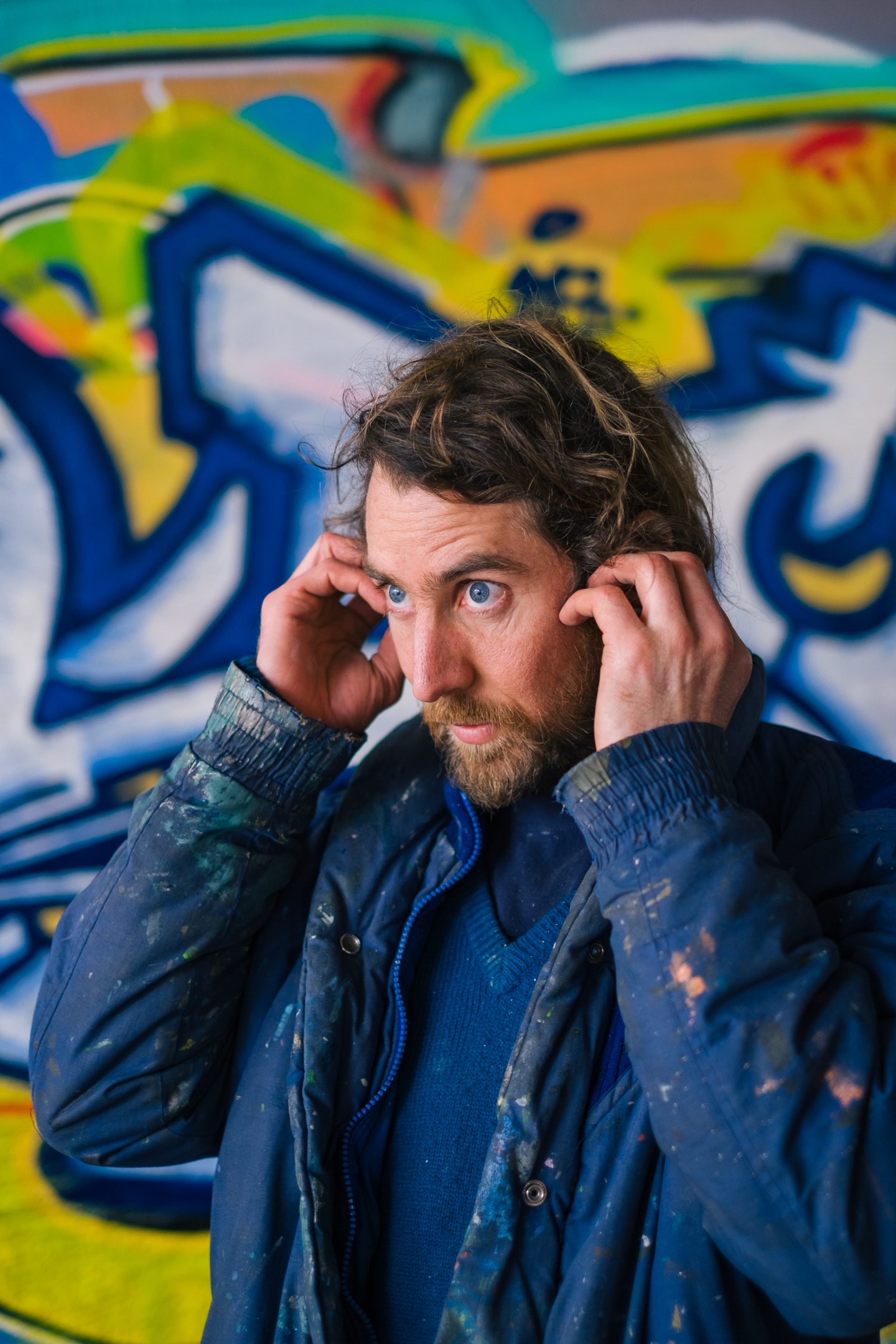Excavating Adelaide’s street art history
Street artist Seb Humphreys was given the opportunity to pull down and dissect the graffiti free wall under the Morphett Street bridge.
He cut the large false wall into smaller pieces and pulled back the layers of paint on each block, creating new topographical forms.
The work, which appeared at Newmarch Gallery and Hindmarsh Academy, exposes the obscured nature of public art in Adelaide.
Below, Seb speaks on the project.

A lot of the sentimentality of those early years of graff is what this is about for me.
On certain walls along the O-Bahn, I might have 20 pieces sandwiched between layers of paint.
Those walls used to get painted out every Tuesday morning. They had a cleaning vehicle that ran down the O-Bahn tracks with giant air guns.
Add that up for 20 years, it’s a lot of paint on those walls.
If this was a weird post-apocalyptic world and you came back and everything had been slightly eroded over 300 years, it would look amazing.

My work is all about textures, so that’s where the idea came from, and it was perfect because of Morphett Street bridge.
The graff free wall there, it’s just batons, then they put up flooring boards to make it a smooth surface, so I just took that whole thing off.
When they came down, they were all about 200kgs, one metre by three metres. It was like a monolith coming down.

The paint layered on the wall is a very difficult material to work with, because very quickly it goes into hyper-colour insanity. Balancing that was a bit of a challenge to begin with, all of those immense colours. It blows your mind.
It’s a weird search and discovery. And it’s weirdly addictive.
To me, it was about archaeology, in that sense of digging through the layers. Or palaeontology, reconnecting those things and acknowledging that culture and that history contained within those walls.
So much graff, and people in general, just gets painted over. Expression gets painted over constantly.
I’ve been painting on the street for many years, but professionally for 10 years or more. There’ll be people within the fine art world that won’t have even seen my paintings, but they’ll walk past them all the time and not consider it a painting.
We all have so much to lose being so divided in that context.
Intellectualism needs to come more into the street art world, and at the same time, the stuffier conservatism of the art world could be enhanced by the punk and anti-establishment ethos of street art and graffiti.
The material provides a platform for questioning the divides of the two worlds.


